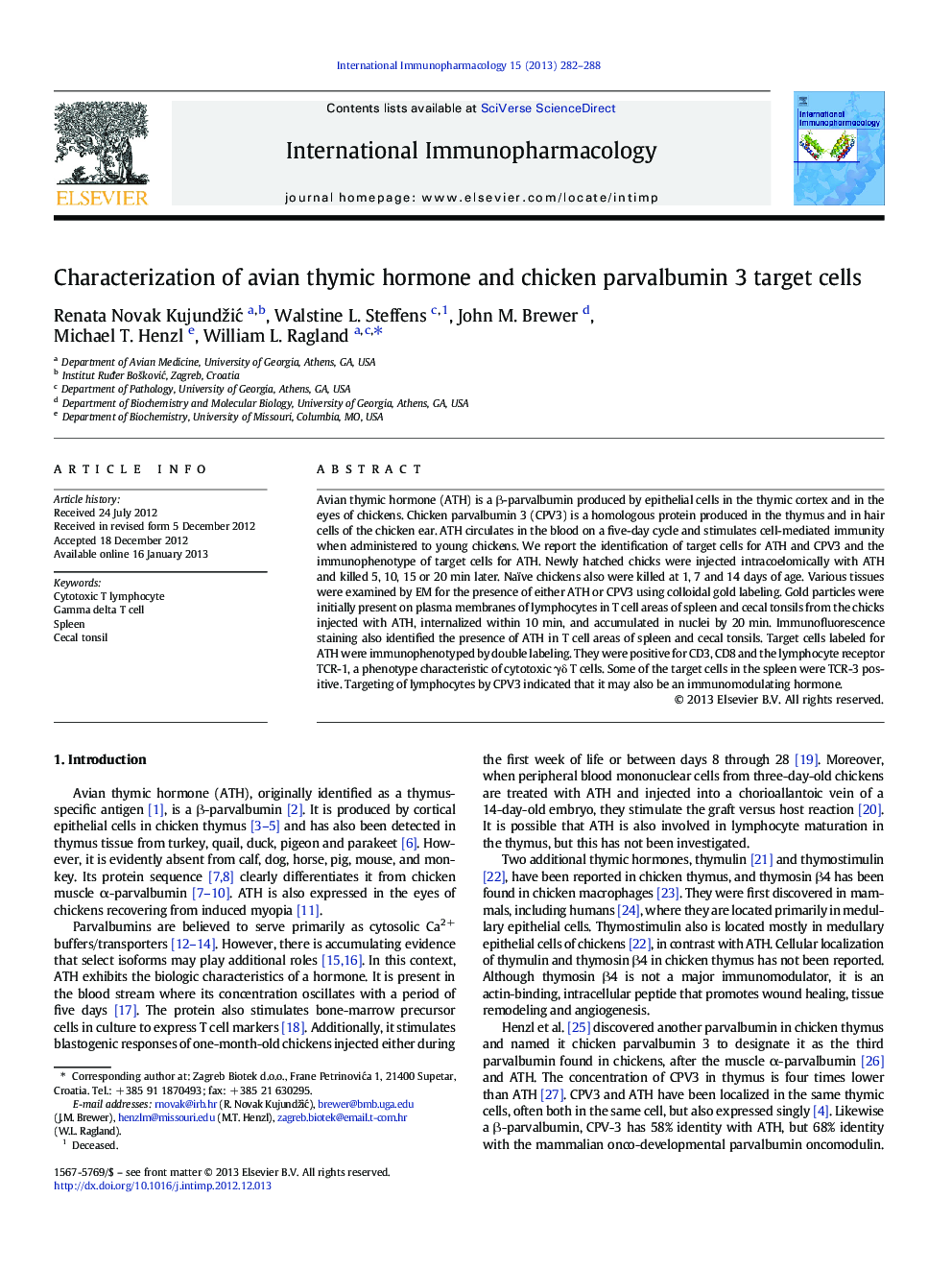| Article ID | Journal | Published Year | Pages | File Type |
|---|---|---|---|---|
| 5833037 | International Immunopharmacology | 2013 | 7 Pages |
Avian thymic hormone (ATH) is a β-parvalbumin produced by epithelial cells in the thymic cortex and in the eyes of chickens. Chicken parvalbumin 3 (CPV3) is a homologous protein produced in the thymus and in hair cells of the chicken ear. ATH circulates in the blood on a five-day cycle and stimulates cell-mediated immunity when administered to young chickens. We report the identification of target cells for ATH and CPV3 and the immunophenotype of target cells for ATH. Newly hatched chicks were injected intracoelomically with ATH and killed 5, 10, 15 or 20 min later. Naïve chickens also were killed at 1, 7 and 14 days of age. Various tissues were examined by EM for the presence of either ATH or CPV3 using colloidal gold labeling. Gold particles were initially present on plasma membranes of lymphocytes in T cell areas of spleen and cecal tonsils from the chicks injected with ATH, internalized within 10 min, and accumulated in nuclei by 20 min. Immunofluorescence staining also identified the presence of ATH in T cell areas of spleen and cecal tonsils. Target cells labeled for ATH were immunophenotyped by double labeling. They were positive for CD3, CD8 and the lymphocyte receptor TCR-1, a phenotype characteristic of cytotoxic γδ T cells. Some of the target cells in the spleen were TCR-3 positive. Targeting of lymphocytes by CPV3 indicated that it may also be an immunomodulating hormone.
⺠ATH and CPV3 target cells were located in T cell areas of the spleen and cecal tonsil. ⺠ATH accumulated in nuclei 20 min after injection in newly hatched chicks. ⺠ATH target cells had the phenotype of cytotoxic γδ T cells. ⺠CPV3 may also be an immunomodulating hormone.
